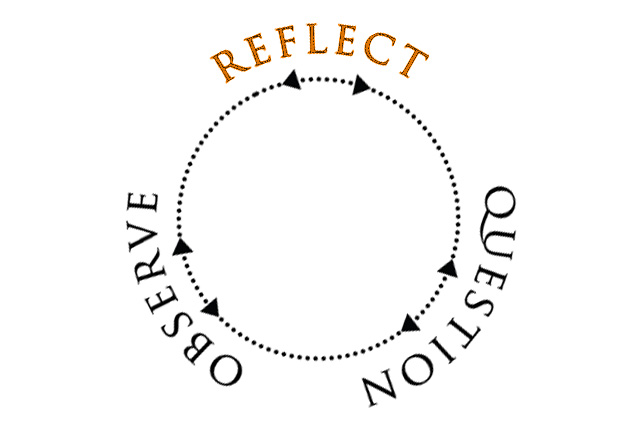This module is for

Reflecting on primary sources helps students think about different viewpoints and develop historical empathy.
Primary Source Analysis - Reflect
The next phase in the analysis process is Reflect. After students record their observations, they shift into a reflection mode, in which they make connections between the information conveyed in the source and their prior knowledge of a subject. For example, a student analyzes a handwritten letter from George Washington to Alexander Hamilton in 1787. The student may know something about the roles each man played in developing the U.S. Constitution or be familiar with the founding fathers as portrayed in Hamilton: An American Musical.
The student’s prior knowledge is a catalyst to guide them on their own path of discovery. Essentially, students have a chance to consider:
- What do I already know?
- What do I bring to this source to help me make sense of it?
Reflection allows students to ask questions and determine the usefulness of a primary source. Take a moment to explore three important areas for student reflection.
Case Maker Connection
 Students are encouraged to reflect on their prior knowledge and make connections to the challenge scenario. They are also prompted to think critically and reflect on the authorship, audience, and historical context of the primary source sets to draw conclusions about the usefulness of the sources as historical evidence and explain the rationale of why it is important.
Students are encouraged to reflect on their prior knowledge and make connections to the challenge scenario. They are also prompted to think critically and reflect on the authorship, audience, and historical context of the primary source sets to draw conclusions about the usefulness of the sources as historical evidence and explain the rationale of why it is important.




